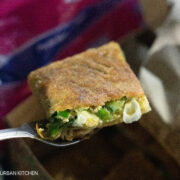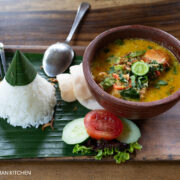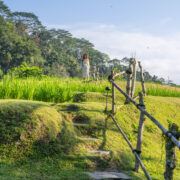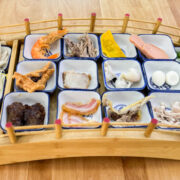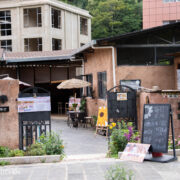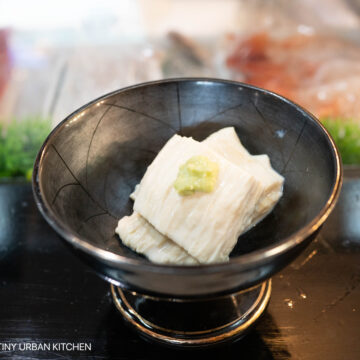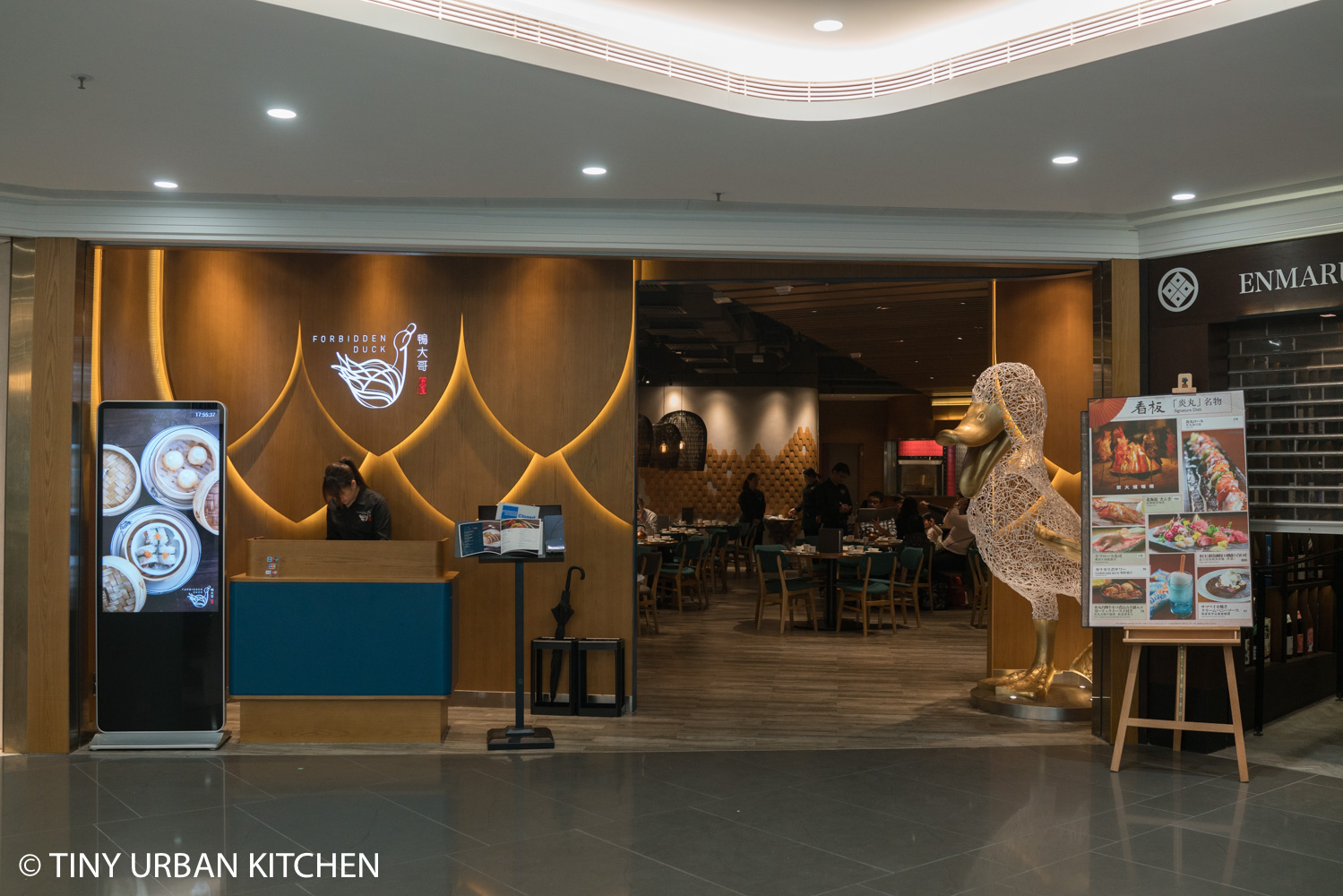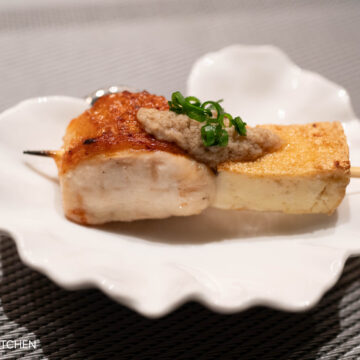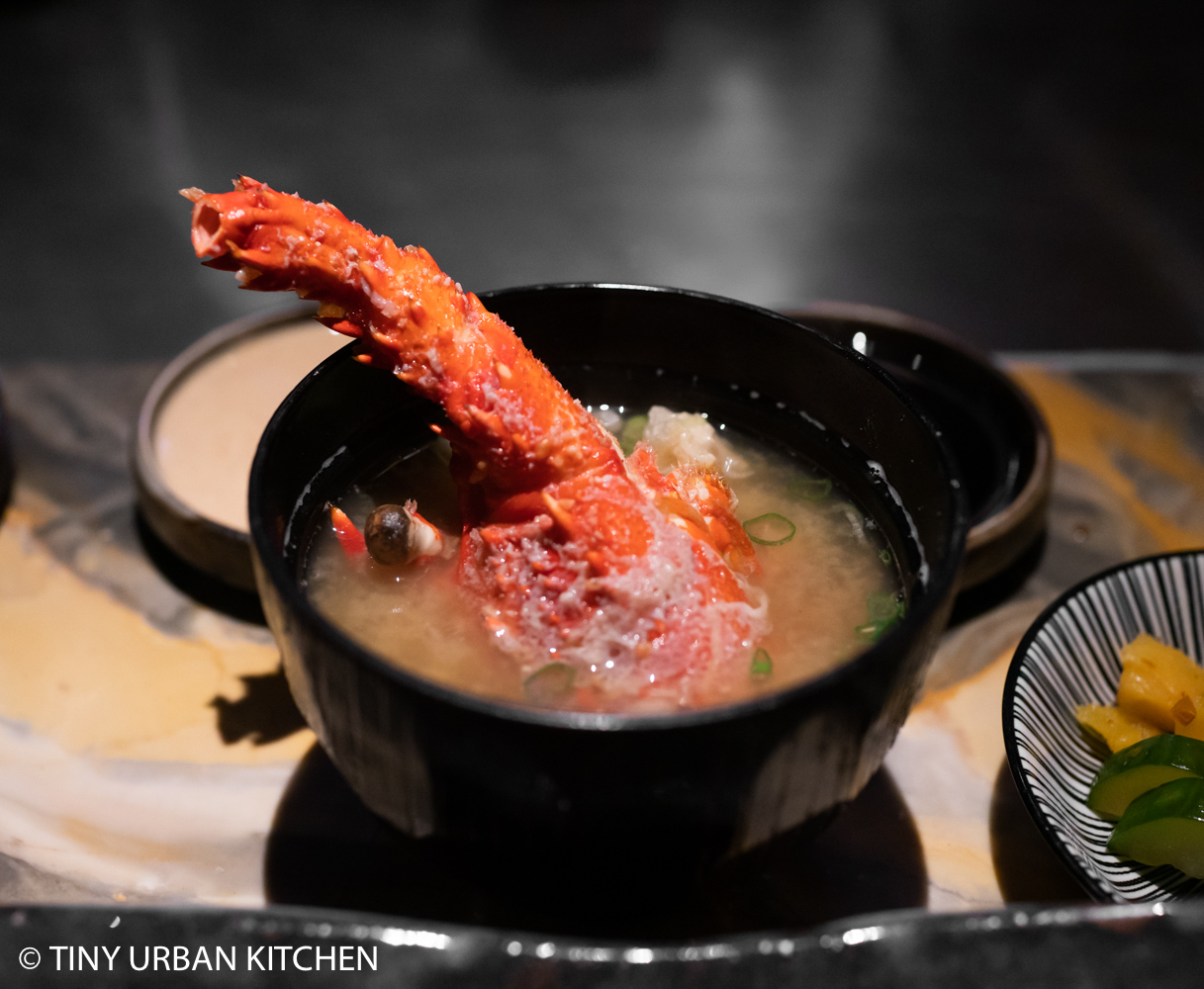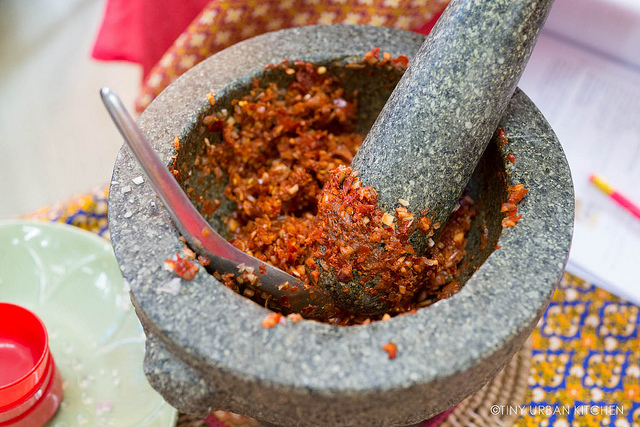
This is the tenth post in the Thailand! travel series of my eats in Bangkok. Other posts include Thip Samai, Best Pad Thai in Bangkok? and Raan Jay Fai, Best Drunken Noodle in Bangkok, Maeklong Railway Market, Floating Markets (Damnoen Saduak), Street Foods of Bangkok, Part I, and Street Foods of Bangkok, Part II, Fun Fruits in Thailand, Somphong Thai Cooking School, and Som Tam (Papaya Salad).
Thai food is known for its extreme spiciness.
In Bangkok, where there are a ton of tourists, it's not uncommon for the waiter to ask you what kind of spice level you want. Bryan has always loved spicy food, so he never hesitates to say "spicy."
The server will then respond by asking, "Thai spicy?"
If you say "yes," you'll most certainly be blown away by the spiciness of the food. Thailand is the only place in the world where Bryan has ever had to stop eating a dish because it was too spicy.
Thankfully, not all Thai food is characterized by excessively spicy food. Panaeng curry is a perfect example.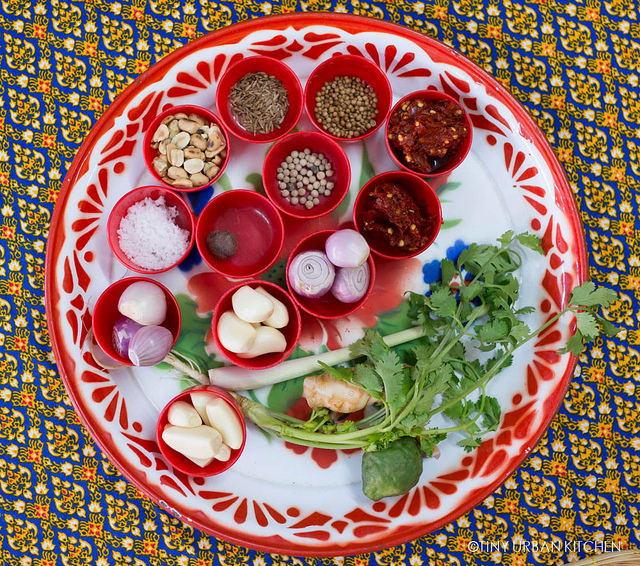
Despite its gorgeously bright red color, Panaeng curry is actually a milder, sweeter, and less spicy curry than its heat-laden cousins. Unique because of the presence of crushed peanuts, Panaeng curry is also gloriously fragrant and flavorful due its inclusion of a dizzying array of ingredients, including lemongrass, coriander seeds, galangal, cilantro root, and kaffir limes.
It's the perfect dish for those of us who can't quite handle the crazy heat of Thai food, but still love the rich and complex aromas of Southeast Asian herbs and spices.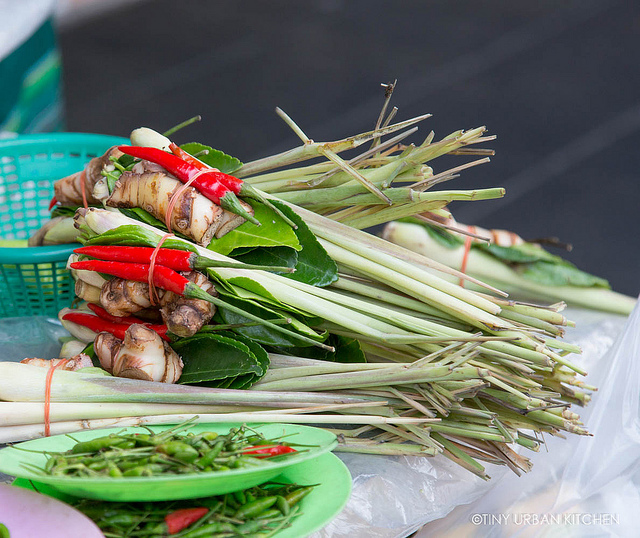
Before we get to the recipe, let's take a closer look at some of those more exotic herbs (which we picked up during our fun little market trip earlier in the day).
Pictured above, gorgeous bunches of lemongrass, Thai chilies, galangal, and kaffir lime leaves. This combination of ingredients is used in so many things, it makes sense for the market to sell them together. Our Panaeng curry will use all of those ingredients.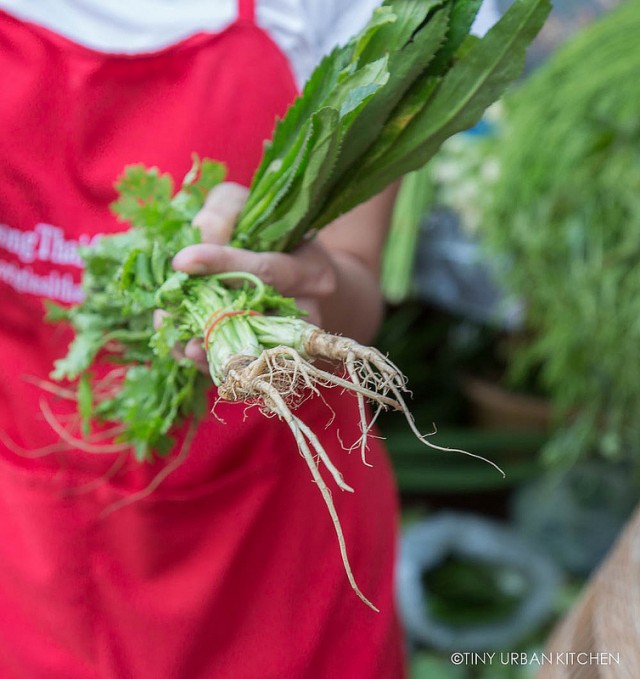
Coriander (or cilantro) root is commonly used in Thai cooking. The root itself gives a more intense flavor than the leaves. Sadly, most US supermarkets cut off the roots of cilantro, and therefore it's harder to find the roots in the US. It's OK to substitute the roots with stems in a recipe if necessary, keeping in mind the flavor will be less intense.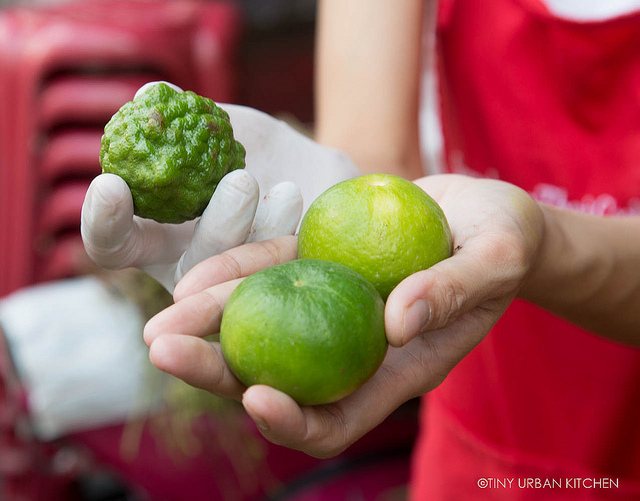
Have you ever seen a kaffir lime (left)? It's much bumpier than a normal lime (right), and also has a lot less juice inside. People mostly use the kaffir lime's zest and leaves in Thai cooking. The juice itself is too tart and not typically used.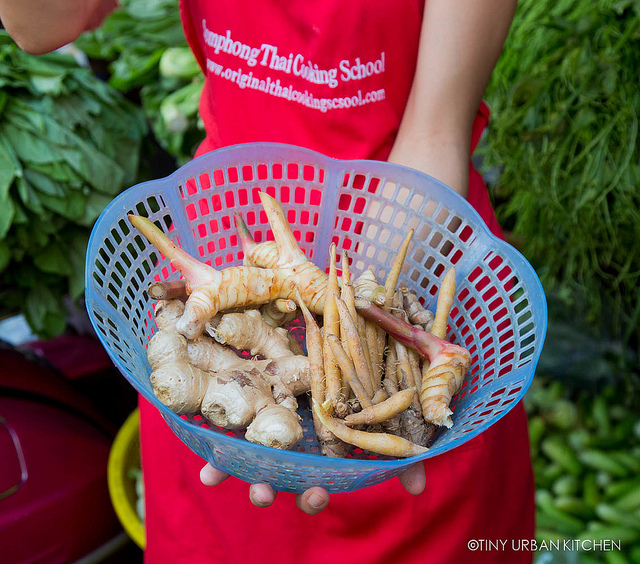
At the market, our cooking instructor Koy showed us three different roots that are related but taste very different. Traditional ginger (with which we are all familiar), galangal (a root commonly used in Thai cooking that's sweeter and milder than ginger), and yet another even narrower, finger-like root (whose name I cannot remember - does anyone know?).
According to Koy, freshly made curries taste infinitely better than the stuff you can buy in packages. However, making curry is quite labor intensive, and therefore it's totally understandable why sometimes you may just reach for a package if you are short on time.
Koy gave us one trick for those times when we reach for the package: add extra coriander seed, coriander root, and cumin. It will taste so much better and closer to a freshly made version.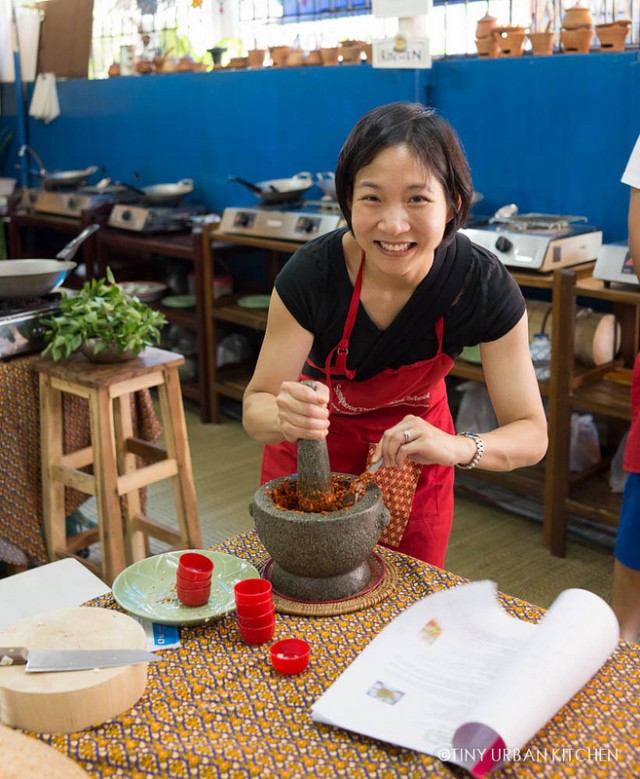
Though the steps for making the curry are not particularly difficult, they are time consuming. You must first measure out and prep (chop, seed, soak, etc) the large list of ingredients. Then, group by group, add the ingredients into a mortar and pestle.
The grinding is tedious.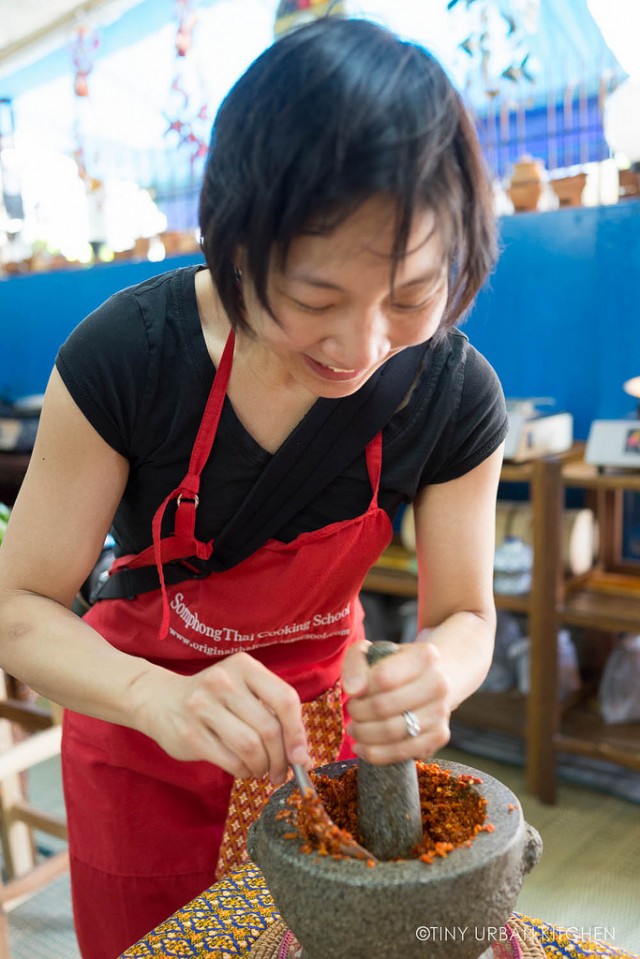
We physically pounded away at this for about 10 minutes and didn't even come close to a smooth paste.
Theoretically, hand grinding will afford a smoother, more refined curry paste. However, most people these days rely on the food processor because it just saves so much time and energy and still creates a fine product.
Our pastes were whisked away and thrown into a food processor.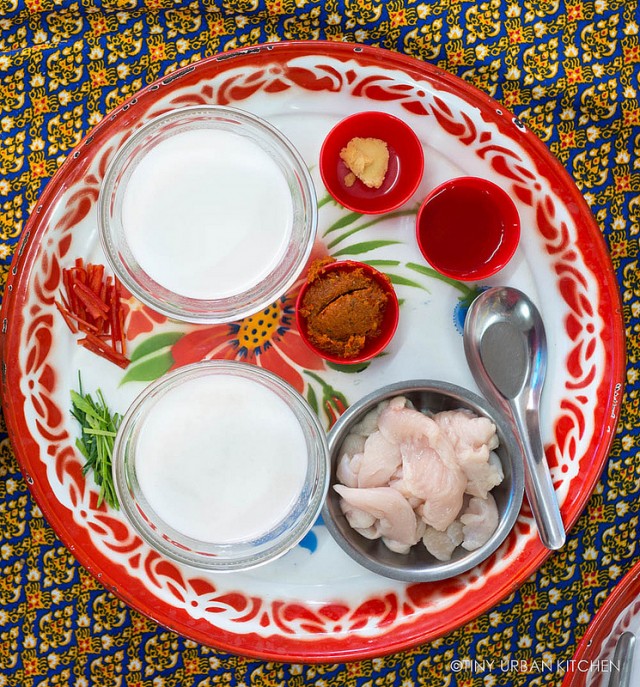
Once the smooth paste was done (check out how much finer it looks now in the photo above!) we prepped our ingredients for chicken curry. Above, you can see fresh coconut cream, coconut milk, palm sugar, fish sauce, kaffir lime leaves (thinly sliced), and chicken breast meat.
If you can't get fresh coconut milk and coconut cream, Koy recommends just buying the small packaged carton of cream. You can make "milk" just by diluting the cream in half with water.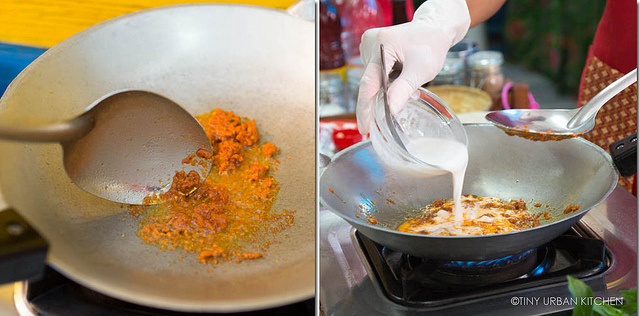
Saute one tablespoon of the curry paste it in a wok until it is fragrant. Add ½ cup of coconut cream and reduce the heat.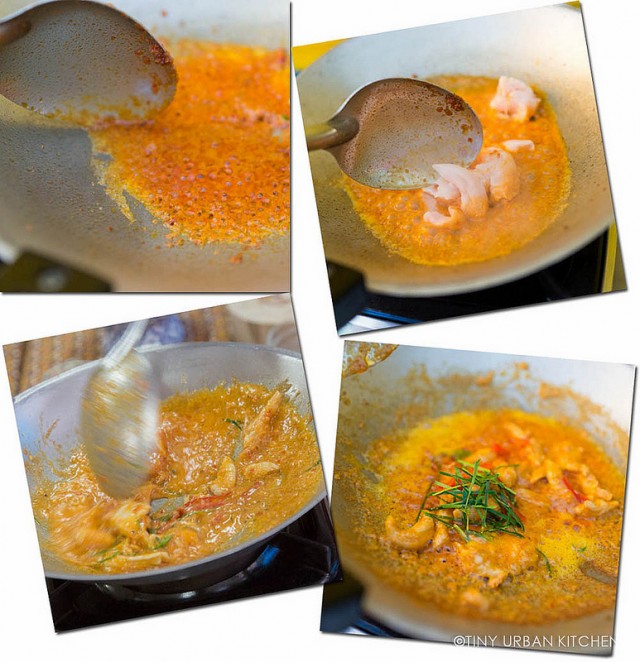
Wait until you see bubbles forming. This is the fat from the coconut milk separating out and rising the the surface. Add the chicken and stir fry until it is cooked all the way through. Add the rest of the coconut milk, fish sauce, and palm sugar.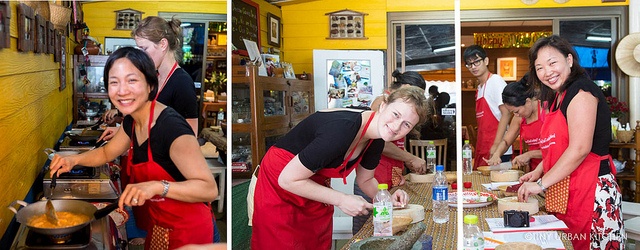
If you can't get palm sugar around you, brown sugar or even white sugar are acceptable substitutes, though brown sugar is preferred. When shopping for a fish sauce, get a lighter colored bottle. Color is an indicator of freshness. Fish sauce darkens over time and becomes more fishy as it ages.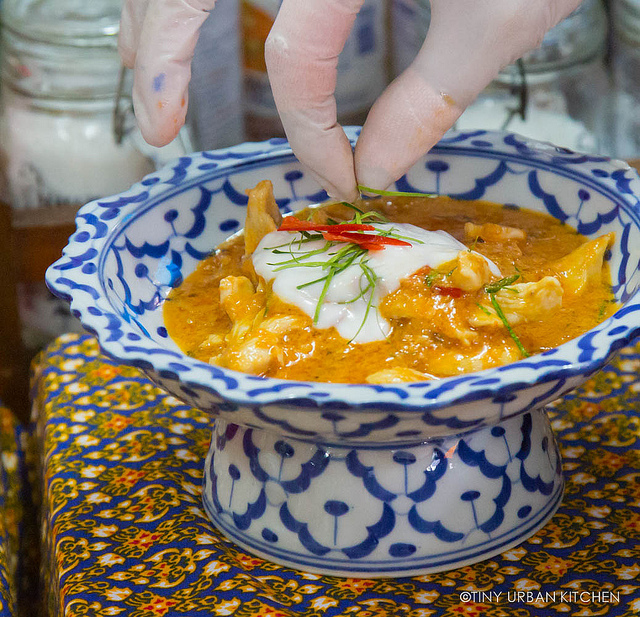
As a final step, sprinkle thinly sliced kaffir lime leaves and Thai bird chili strips for decoration. If you want, you can optionally add a dollop of thickened coconut cream, which is just made by heating coconut cream up with some corn starch (about 2 teaspoon of corn starch per cup of canned coconut cream). Important note: dissolve the corn starch in the coconut cream at room temperature and then heat up. Otherwise, the starch will clump if added to a warm liquid.
Serve! Over rice, noodles, whatever!
Yum . . . SO good.
Ingredients
group 1
5 peppercorns
½ teaspoon roasted coriander seed
½ teaspoon roasted cumin seeds
¼ teaspoon salt
group 2
1 teaspoon galangal, chopped
1 teaspoon lemongrass, chopped
½ teaspoon kaffir lime skin, finely chopped
½ teaspoon cilantro root (or use cilantro stems/leaves if the root is unavailable)
group 3
4 dried spur chilies, seeded and soaked
1 teaspoon chopped shallots
1 teaspoon chopped garlic
group 4
½ teaspoon shrimp paste (or anchovies)
1 teaspoon roasted peanuts
Pound group 1 ingredients (coriander seeds, cumin seeds, peppercorns and salt) in a mortar and pestle (or spice grinder). Add the group 2 ingredients (galangal, lemongrass, kaffir skin, cilantro root). Then add group 3 ingredients (garlic, shallots, and chilies). Add shrimp paste and pound until smooth. Finally, add peanuts and crush them in. Use a food processor if necessary to get the texture like a really fine paste.
Set aside.
Panaeng Chicken Curry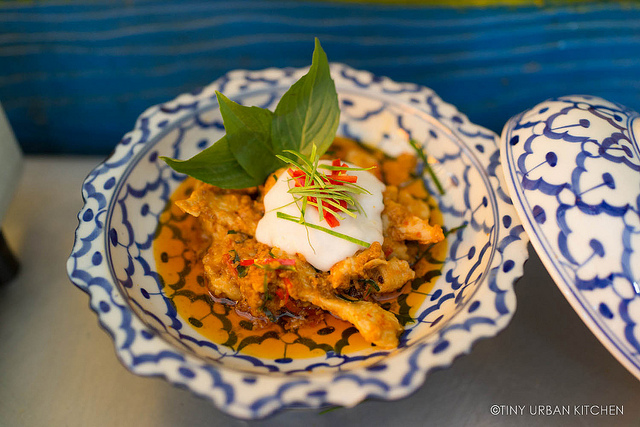
serves 1 as a main dish, or 2 as an appetizer
Ingredients
70g boneless chicken, cut into bite sized pieces
1 teaspoon Panaeng curry paste
½ cup coconut cream
½ cup coconut milk
1 T red spur chili, thinly sliced (remove seeds!)
2 kaffir lime leaves, thinly sliced
½ T fish sauce
½ teaspoon palm sugar
Heat curry paste over medium heat until fragrant. Reduce heat and add coconut cream and stir until the oil separates out (you will see little bubbles forming). Add chicken and stir fry until it is cooked through. Add the coconut milk. Add fish sauce and palm sugar.
Sprinkle kaffir lime leaves and chilies and remove from heat.
Optionally add a dollop of coconut topping, made by heating coconut milk and corn starch together. Garnish with chopped chilies and kaffir lime leaves.
Enjoy!
All Rights Reserved


